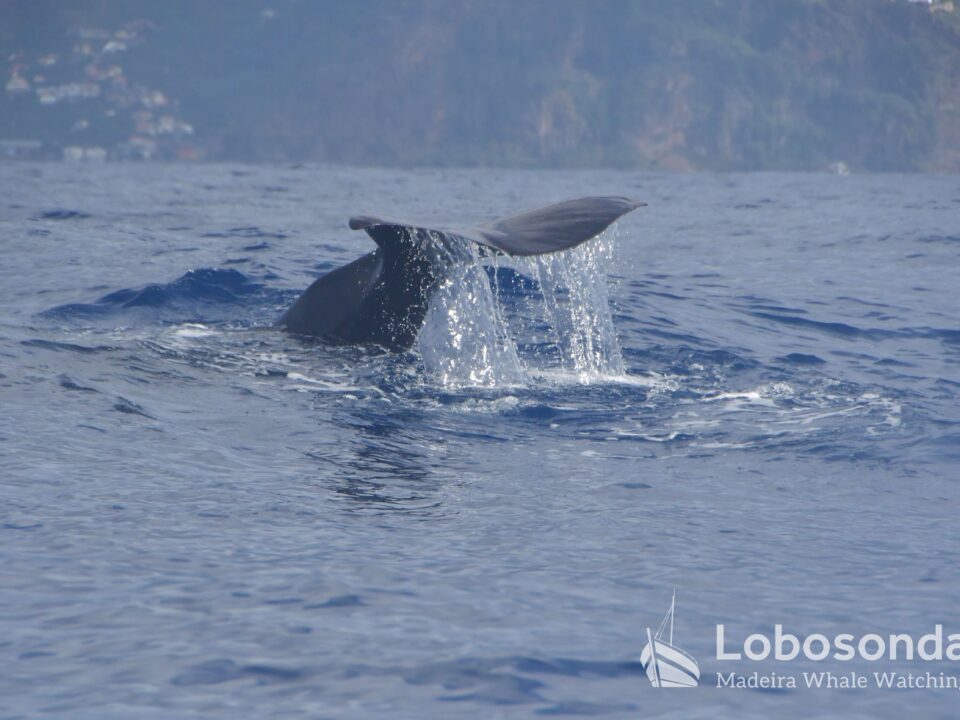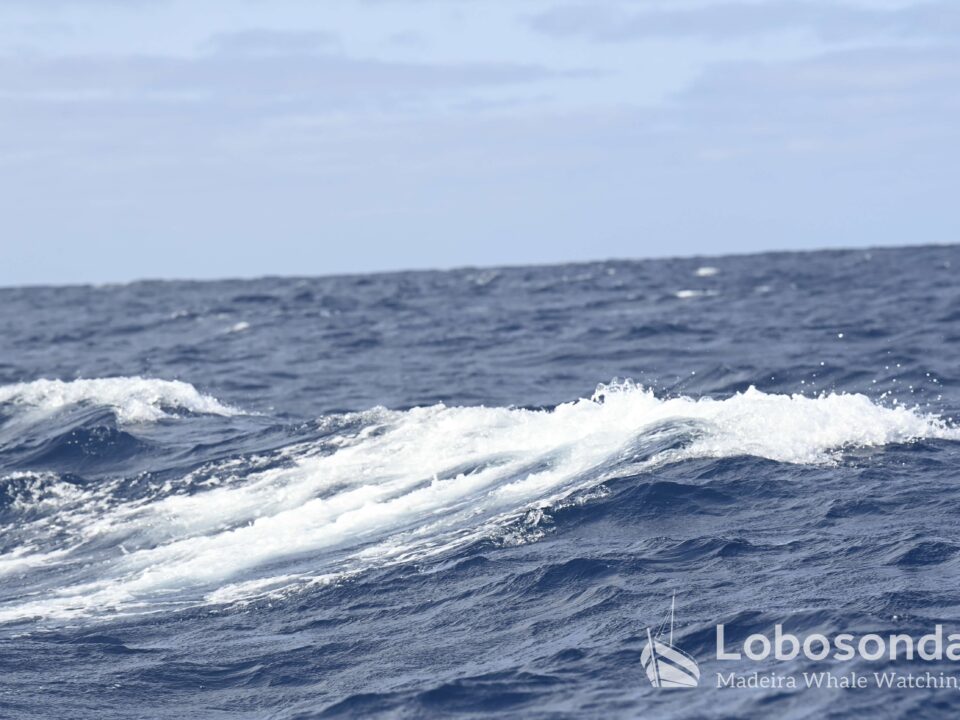
15.04.2019 – Identifying feature
April 25, 2019Mirror, mirror; Self-awareness in Bottlenose dolphins
April 29, 2019Yesterday it was not clear if the weather conditions would allow us to go to the sea today. But the “weather god” was kind to us and our guests had a good time with an interactive group of Common dolphins (Delphinus delphis) that surrounded our fishing boat and surfed in the bow wave. Especially clearly we could perceive the communication of the animals. Bright, high notes echoed up from the bow of the Ribeira Brava.
Dolphins produce a variety of sounds. Where the range of sounds reaches 200 kilohertz, the human auditory perceptibility is reached at 20 kilohertz. With whistle and click sounds these intelligent animals exchange information. Even a form of naming exists in dolphins, the so-called signature whistle. Whether there is cross-species communication in marine mammals has not yet been explored, but researchers assume that a form of communication is taking place.
If these beautiful animals are riding in our bow wave and we hear the high communication tones, as today, then one or the other admirers of the dolphins will certainly want to understand these aquatic beings. By the way, some people are working on such a project already. Dr. Thad Starner and his team from the Georgia Tech University developed the so-called CHAT (Cetacean Hearing and Telemetry). There are high expectations for this high-tech device, as it is hoped that the language of the dolphins will be deciphered and that they will be able to communicate directly with these intelligent marine mammals.
The CHAT is a special software from highly complicated algorithms which is used for the communication analysis of the dolphins. On the basis of the saved clicks and whistles one hopes one day to be able to assign certain vocalizations to certain behaviors and to decode the language of the dolphins.
Denise Herzing and her team from “The Wild Dolphin Project” are working on a better understanding of a yet unknown language, the “Dolphish””
by Fatima Kutzschbach
Sightings of the day
Ribeira Brava
10:00 Common dolphins








